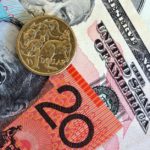On Monday (in GMT terms) gold for delivery in December traded within the range of $1,182.4-$1,197.2. Futures closed at $1,190.8, surging 1.05% compared to Friday’s close. It has been the 181st gain in the past 389 trading days and also the steepest one since November 2nd. In weekly terms, gold futures lost 2.51% of their value during the past week. It has been the 22nd drop in the past 47 weeks and also a third one in a row. The precious metal has pared its slump to 6.46% so far during the current month, after losing 3.34% in October.
On the Comex division of the New York Mercantile Exchange, gold futures for delivery in December were edging down 0.48% on Tuesday to trade at $1,185.1 per troy ounce. The precious metal went up as high as $1,194.8 during early Asian trade, while the current daily low was at $1,184.4 per troy ounce, recorded during the early phase of the European trading session.
The US Dollar Index, a gauge reflecting the relative strength of the greenback against a basket of 6 other major currencies, was edging up 0.29% on the day at a level of 101.50, after going up as high as 101.54 earlier. Yesterday the index retreated to 100.67, or a level unseen since November 17th. The gauge has increased its advance to 3.13% so far in November, following a 3.18% surge in October.
Yesterday gold futures rebounded from 9.5-month lows, recorded on Friday, as the US Dollar continued to pull back from highs unseen in 13 1/2 years on profit taking. The greenback has recently been supported by a largely positive string of US macroeconomic data released last week, while the latter were seen as consistent with a possible raise in the target range for the federal funds rate in December.
The Minutes from the Federal Open Market Committees policy meeting, held on November 1st-2nd, revealed that policy makers saw a continuously stronger case for a rate hike, while such a move would be appropriate relatively soon, so long as incoming data provided some further evidence of continued progress toward the Committees objectives on employment and PCE inflation.
In early European trade on Tuesday gold remained within the lower section of a relatively wide range, as markets awaited a vast string of key macroeconomic reports and other events, which may shape sentiment, scheduled later this week.
Today gold trading may be strongly influenced by the revised estimate of the US Q3 Gross Domestic Product. The second estimate of the US GDP probably pointed to an annualized rate of growth of 3.0% in the third quarter of the year, according to market expectations, up from 2.9% in the preliminary release. If so, this would be the fastest annual rate of growth since the second quarter of 2015, when US economy grew at a final 3.9%. The final GDP estimate for Q2, reported on September 29th, pointed to an annual growth of 1.4%, a revision up compared to the second GDP estimate. In case the second GDP estimate met or even outpaced expectations, this would certainly boost the US Dollar and pressure dollar-priced commodities such as gold. The revised report is due out at 13:30 GMT.
Additionally, market players will be paying a close attention to the public appearance of several Federal Reserve officials. At 12:45 GMT Federal Reserve Vice Chair, Stanley Fischer, is scheduled to attend The Clearing House annual conference in New York, while at 14:15 GMT the Fed President for New York, William Dudley, is expected to speak on opportunities for economic growth in Puerto Rico, in San Juan (Puerto Rico). Economic outlook or monetary policy-related remarks would heighten USD and gold volatility.
Meanwhile, medium-term investor rate hike expectations were almost unchanged near highs unseen in more than a year.
According to CME’s FedWatch Tool, as of November 28th, market players saw a 93.5% chance of a rate hike occurring at the Federal Reserve’s policy meeting in December, or unchanged compared to the prior three business days, and a 94.0% chance of a hike in February 2017, or unchanged compared to the preceding two business days. As far as the March 15th 2017 meeting is concerned, the probability of such a move was seen at 94.9% on November 28th, down from 95.1% in the prior two business days.
Daily, Weekly and Monthly Pivot Levels
By employing the Camarilla calculation method, the daily levels of importance for gold are presented as follows:
R1 – $1,192.2
R2 – $1,193.5
R3 (Range Resistance – Sell) – $1,194.9
R4 (Long Breakout) – $1,198.9
R5 (Breakout Target 1) – $1,203.7
R6 (Breakout Target 2) – $1,205.7
S1 – $1,189.4
S2 – $1,188.1
S3 (Range Support – Buy) – $1,186.7
S4 (Short Breakout) – $1,182.7
S5 (Breakout Target 1) – $1,177.9
S6 (Breakout Target 2) – $1,175.9
By using the traditional method of calculation, the weekly levels of importance for gold are presented as follows:
Central Pivot Point – $1,189.9
R1 – $1,209.4
R2 – $1,240.5
R3 – $1,260.0
R4 – $1,279.6
S1 – $1,158.8
S2 – $1,139.3
S3 – $1,108.2
S4 – $1,077.2
In monthly terms, for the yellow metal we have the following pivots:
Central Pivot Point – $1,279.6
R1 – $1,316.1
R2 – $1,359.0
R3 – $1,395.5
R4 – $1,431.9
S1 – $1,236.7
S2 – $1,200.2
S3 – $1,157.3
S4 – $1,114.3





